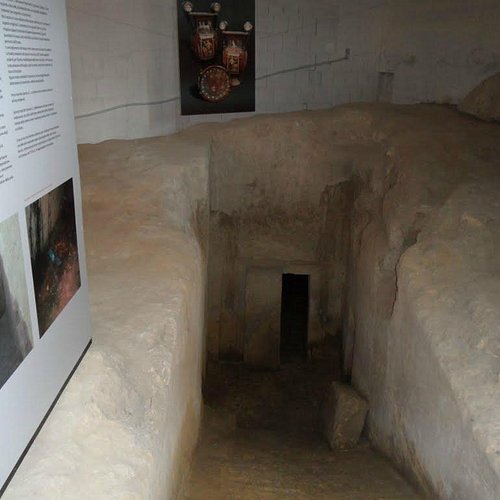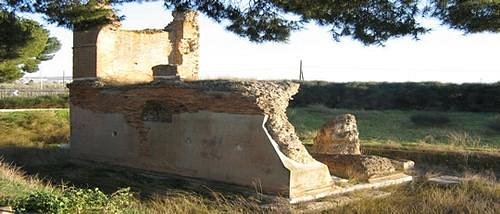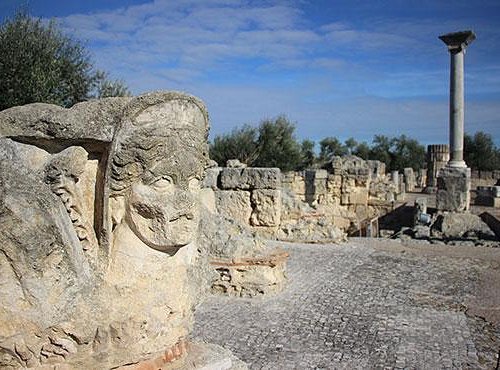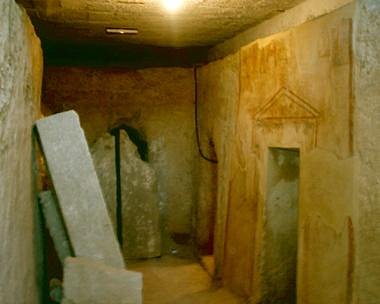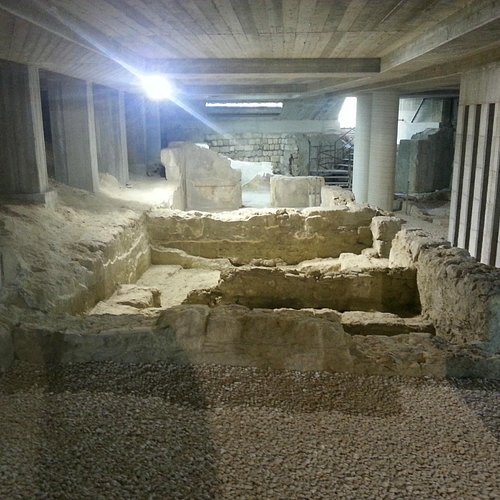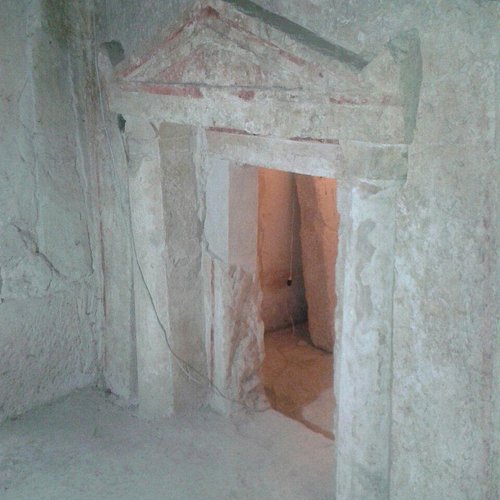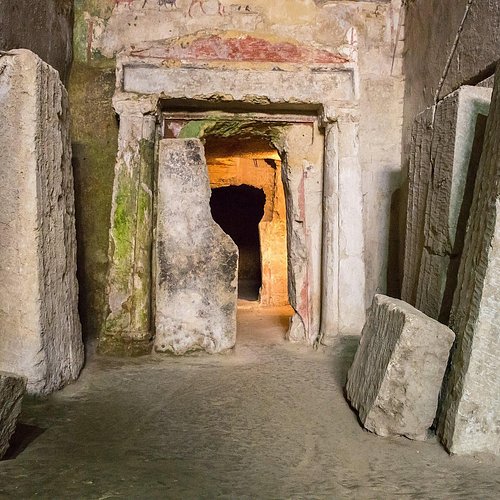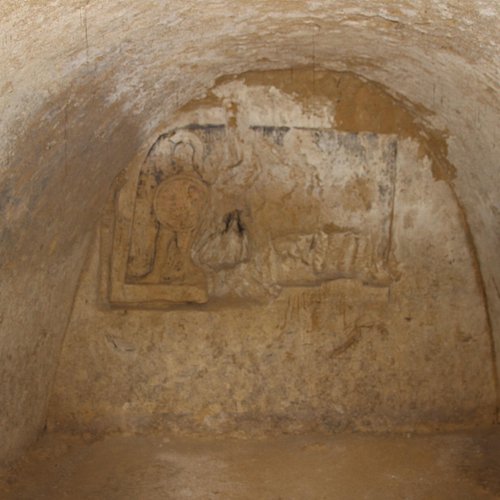The 10 Best Ancient Ruins in Canosa di Puglia, Puglia
Discover the best top things to do in Canosa di Puglia, Italy including Ipogei di Vico San Martino, Mausoleo Bagnoli, Il Parco Archeologico di San Leucio, Ipogeo del Cerbero, Domus Romana di colle Montescupolo, Battistero di San Giovanni, Ipogeo Varrese, Necropoli Dauna di Pietra Caduta, Ipogeo Scocchera, Ipogeo dell'Oplita.
Restaurants in Canosa di Puglia
1. Ipogei di Vico San Martino
Overall Ratings
5.0 based on 1 reviews
2. Mausoleo Bagnoli
3. Il Parco Archeologico di San Leucio
Overall Ratings
4.5 based on 48 reviews
Complex archaelogical site to east south of the city, whose rests are witness of two important historical moments. The hill was select for the building of the most imposing italic temple in southern Italy, devoted to the goddess Minerva - Atena Ilias, with the probable purpose to enact ideologically and politically the alliance among the native "princes" and the Romans in the 318 a.C. The pagan temple, used for the whole Roman epoch, was destoyed during the V sec.AD, probably to work of the bishop Rufino, to give life to the extraordinary basilica to central plant - the greatest Palaeochristian building of Apulia - devoted to the SS. Cosma and Damiano and only subsequently to S. Leucio. Among the elements survisors of the temple there is the Corinthian capital with femalepropome (Giunone?), the drums of numerous grooved columns, the feet of a gigantictelamone. Elegant columns surmonted by wonderfull ionic, polychrome capitals as the splendid one "mosaic of the peacock", characterize the Christian building.
4. Ipogeo del Cerbero
Overall Ratings
4.5 based on 6 reviews
The grave, made by a simple structure, is characterized for being dig in the clay and for the fresco (beginning of the III centyry BC) to which Cerbero, the famous three-heads dog, define the passing of the subject from its life to the after- world life much more than in the simile potrayal in the Hoplita's hypogeum. Several Charactersthake the deceased to its funeral procession: amog those there are anhoplite and a horse, typical sign of belonging to the equestrian rank.
5. Domus Romana di colle Montescupolo
Overall Ratings
4.5 based on 11 reviews
The domus is unique in the archaological panorama of Canosa. Excavations have revealed a residence of the Augustan articulated according to the scheme Italic atrium. The large central atrium with impluvium gravitate environments thresholds limestone walls and floors decorated in uncertain work signino of clay. Elevations have wall paintings, not yet been restored, with geometric decorations and plants satifying the requirements of IV syle. The building features hilly interior, has been progressively extending to the rear, however, affected by the pre-existence of neighborhood destination craftsmanship, with functional facilities to small factories. Of interest are the remains of a hollow way designed to overcome the strong slope of the Hill Montesupolo. The street is paved in the stretch summit and ramp steps in the trench bottom.
6. Battistero di San Giovanni
Overall Ratings
4.5 based on 10 reviews
The baptistery, one of the mouments attributed to S.Sabino (516 - 566), was integral part of a complex of Christian buildings as the Basilica of the Salvatore and that of S. Maria. The building, with 12 sides, is preserved thanks to the presence of a crusher that, in the 800, has utilized the ancient structures, without twisting its plant and arresting the inexorable destruction of it. The inside is divided in symmetrical environments, displaced around a central room that preserves the rests of the baptismal source of eptagonal form.
7. Ipogeo Varrese
Overall Ratings
4.5 based on 3 reviews
Found in early '900 from the owner of the land, it was lost ad fortunately found again in 1970. It is known for the wealth of arcaeological finds such as ceramic with vascular shapes (from IV sec BC until the end of III sec. BC). Actually the ceramics are exposed in the rooms of Sinesi Palace.
8. Necropoli Dauna di Pietra Caduta
Overall Ratings
4.5 based on 2 reviews
The site of Pietra Caduta, is one of the most interesting cases of humanized attendance of Canosa. The area of over 3.000 square meters, is characterized by densely tombs one-called "grotticella" of the fifth and forth centuries BC. The tombs, all with openings to the east, are drawn axially in a large mass of hard limestone, proceded by at least two roads funeral.
9. Ipogeo Scocchera
Overall Ratings
4.5 based on 7 reviews
It was casually found in 1895 toghter with the Scocchera A hypogeum wich is situated ten meters in sight. Both Scocchera A and B hypogey were emptied of their funeral decorations, covered and lost. In the hypogeum Scocchera were found a series of pots with red figures, an anatomical bronze breastplate and an embossed Celtic helmet, probably a war trophy. The hypogeum included some plastic-decorated pots, statues of worchippers, some glass cups, earrings and a gold sceptre. In the room in axis with the dromos, preceded by a semi-cokumned access, capitals and pediment (naiskos), can be found traces of paint with a scene of dedutio ad inferos.
10. Ipogeo dell'Oplita
Overall Ratings
4.5 based on 4 reviews

